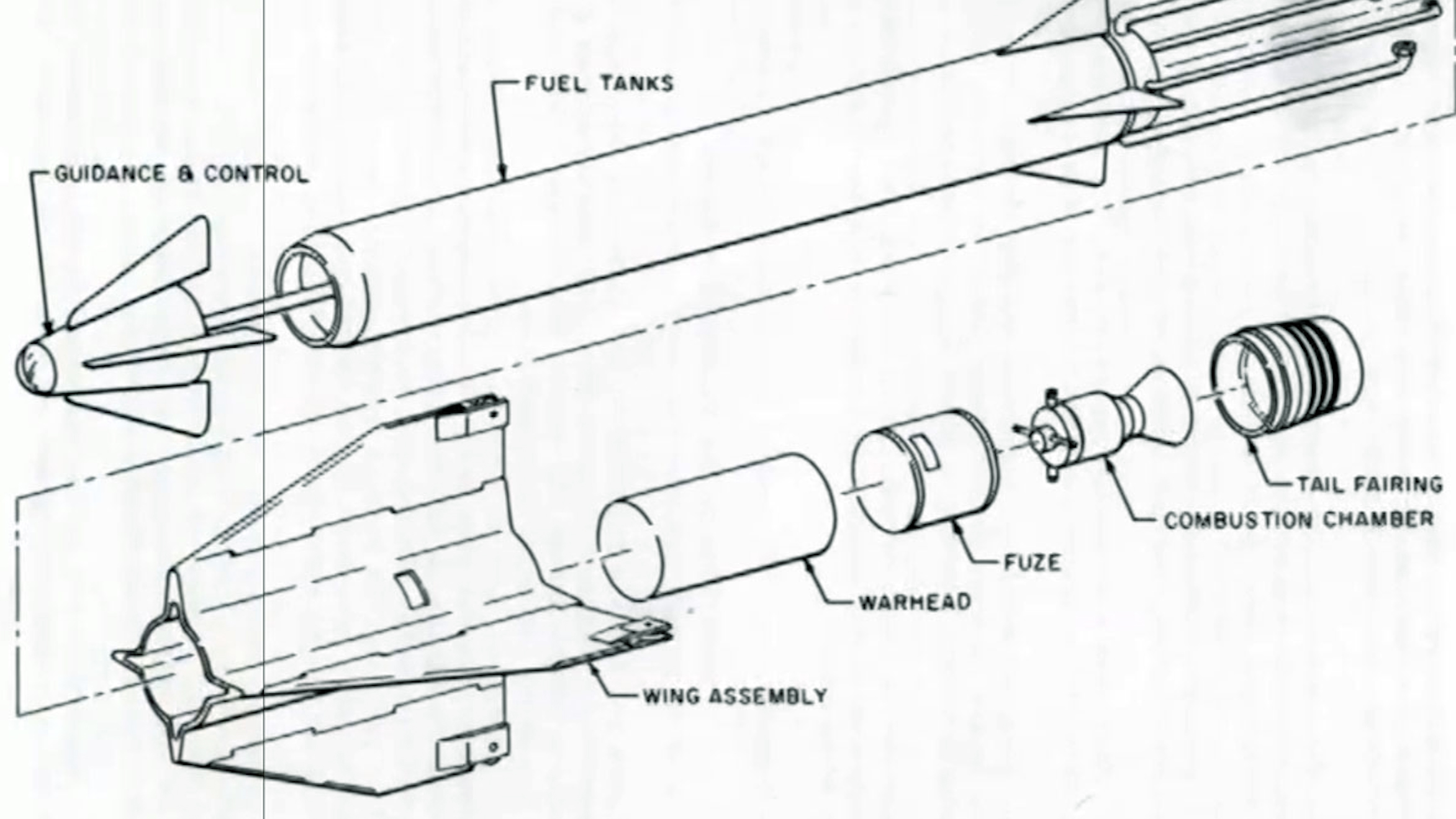While the 1950s was a time of truly unusual and fast-paced innovation in military aerospace, one of the more bizarre projects was for a nuclear-armed, liquid-fueled development of the Sidewinder air-to-air missile that would have featured a novel dual-mode guidance system. Although the planned Diamondback never made it into service, its story provides an interesting counterpoint to the hugely successful Sidewinder and the Navy’s on-off search for longer-range air-to-air weapon in the years that followed.
A compilation video published by the China Lake Alumni provides some background on the Diamondback (starting at around the 7:30 mark) and other missile developments:

Work on the Diamondback began in 1956 when the now-classic Sidewinder air-to-air missile was still very much a new product. At that time still designated AAM-N-7, the heat-seeking Sidewinder had only entered full-scale production in March 1955 and was to make its combat debut three years later, which would occur over the Taiwan Strait.
The full and fascinating back story to the development of the Sidewinder is something you can read about in this previous article.
Already at this early stage, however, the Navy was looking at new kinds of air-to-air missiles that could be developed from the Sidewinder and which would provide improved performance and superior kill probability.
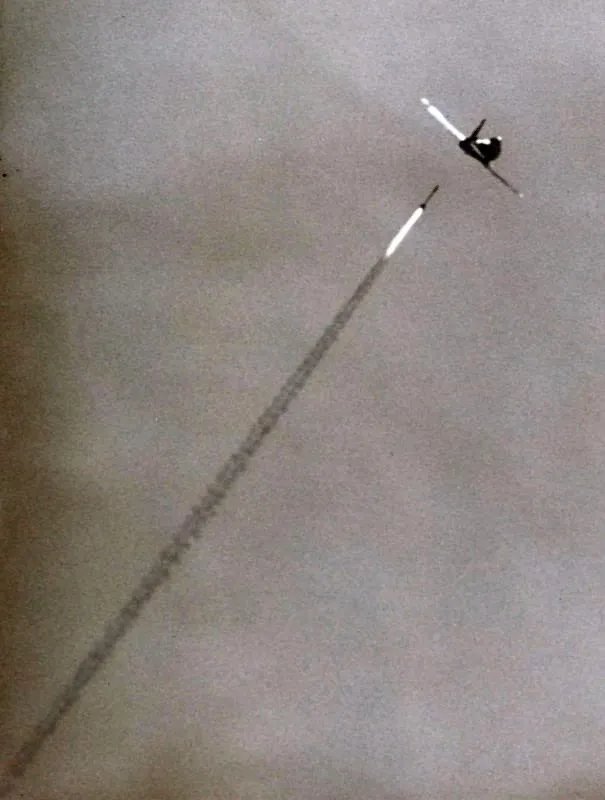
With that in mind, the Naval Ordnance Test Station (NOTS) at China Lake, California, began studies for what was initially dubbed “Super Sidewinder.” The new missile was quickly renamed Diamondback, after the snake — like the sidewinder, another species of pit viper, all of which use heat sensors to find their prey. The new missile was expected to enter service around 1960.
Intended to fly farther and faster than the Sidewinder, the Diamondback would need a new propulsion system. The original Sidewinder had been rapidly developed, originally being based around a repurposed five-inch aerial rocket. Early versions of the Sidewinder were powered by a Thiokol Mk 17 solid-fuel rocket motor developing 4,000 pounds of thrust, enough to boost it to a speed of Mach 1.7 and to reach a target at a distance of up to three miles (in the best-case scenario).
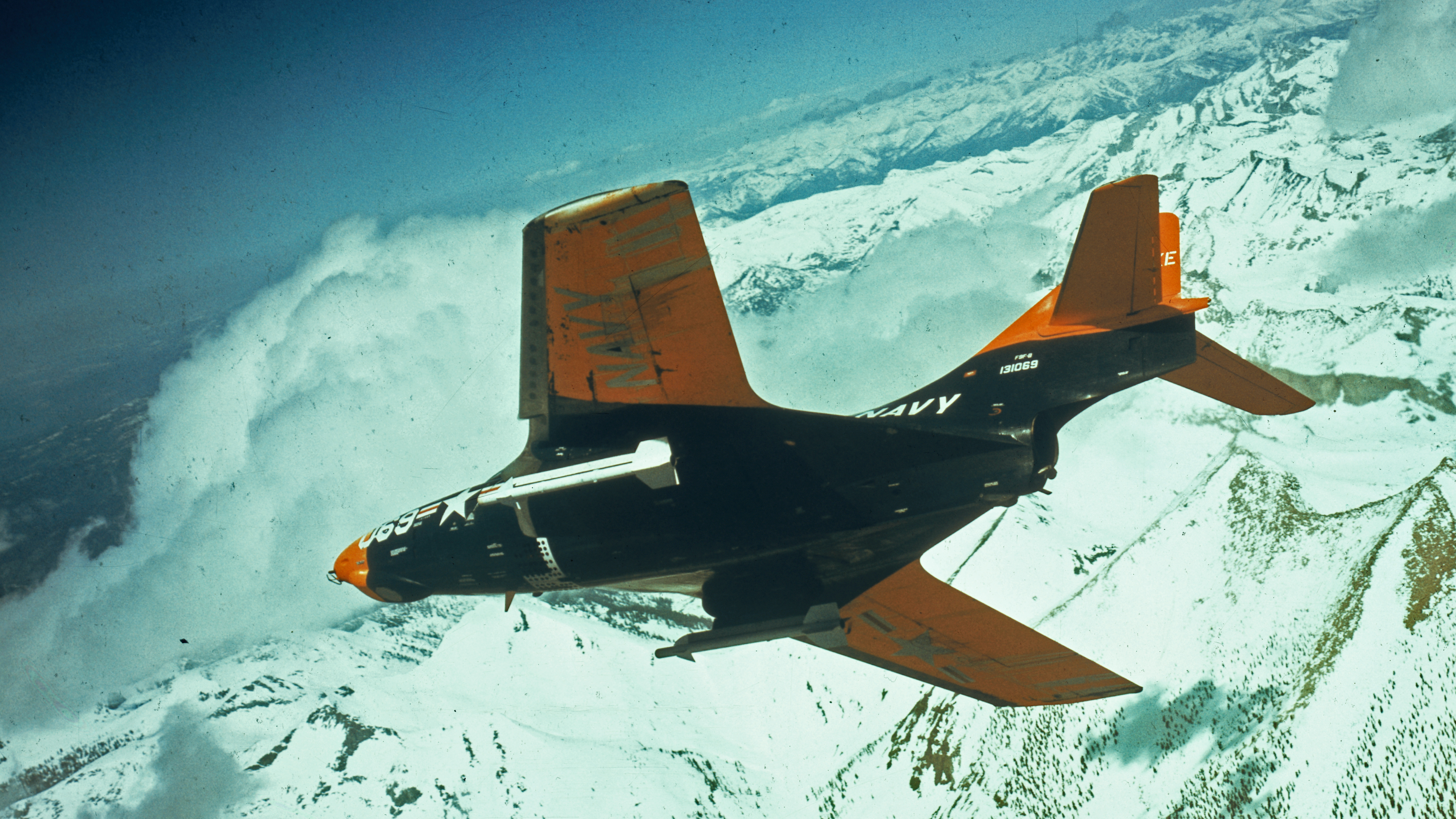
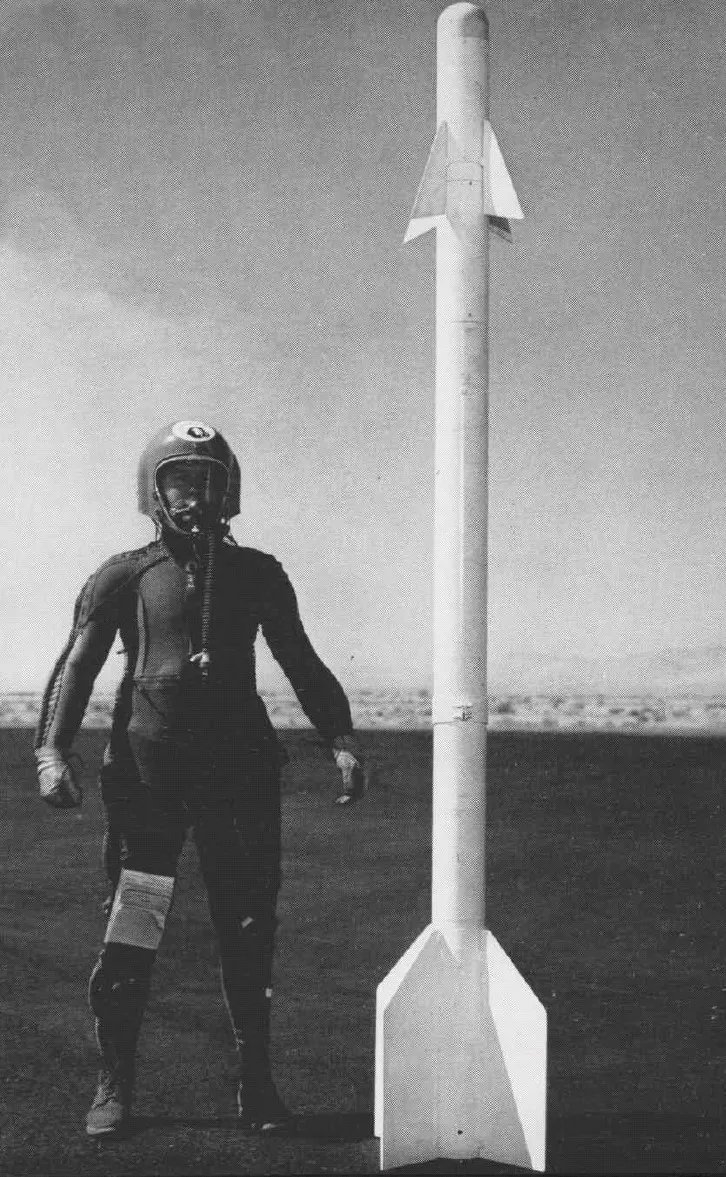
For the Diamondback, NOTS opted for a more complicated type of rocket, a dual-pulse motor powered by liquid fuel. While dual pulse is now found in some longer-range modern missiles, it was very much cutting-edge technology at this time. A dual-pulse motor ensures the missile retains energy across the flight envelope, stretching its range and, just as importantly, ensuring it can maneuver hard enough to hit a target even during the ‘end game’ of the engagement.
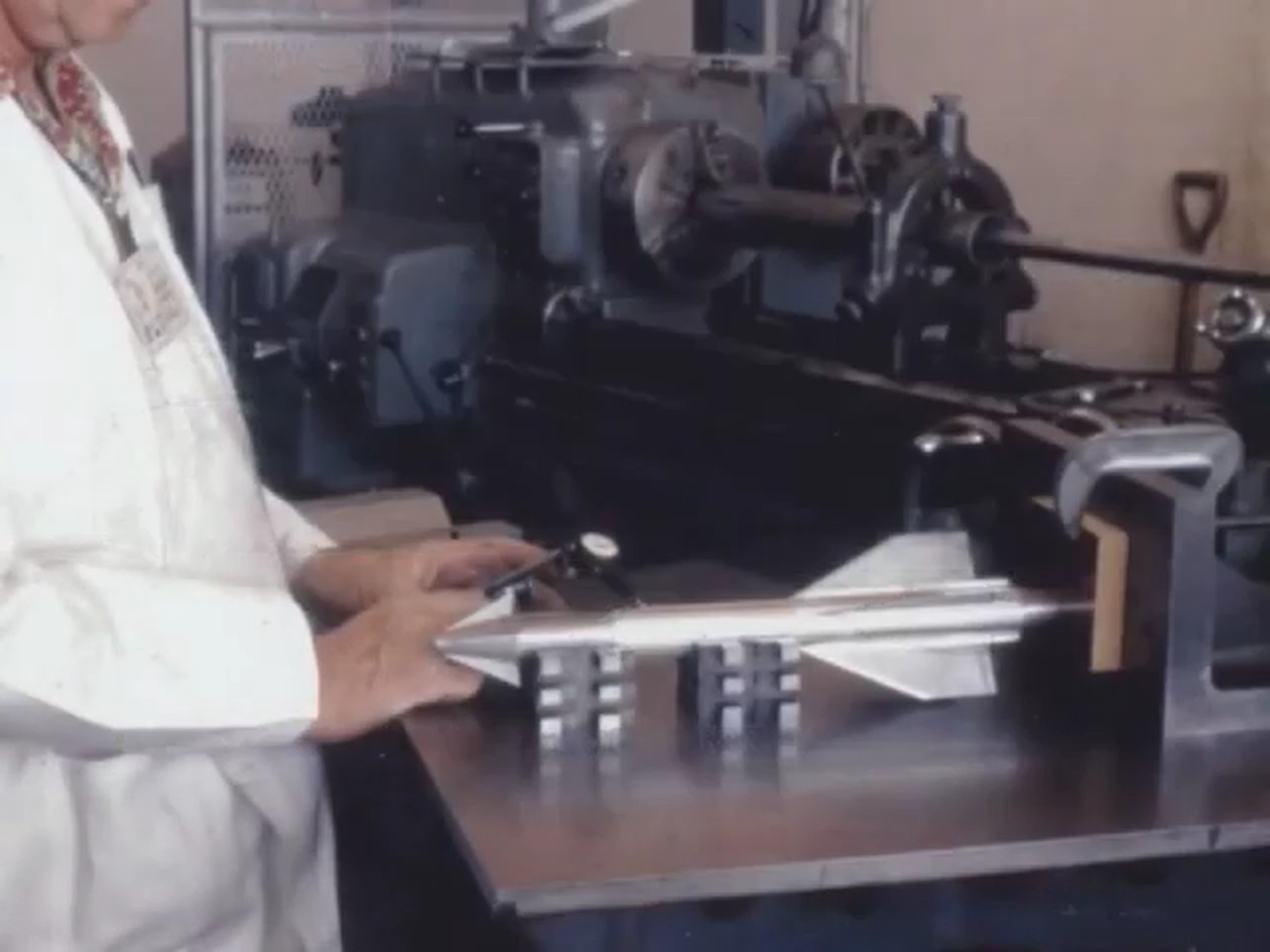
The motor in the Diamondback would be derived from the one developed by NOTS for the Liquid Propellant Aircraft Rocket (LAR). Begun in 1949, LAR was intended to provide a five-inch air-to-air (unguided) rocket that would offer superior performance compared with the solid-propellant rockets otherwise used at the time. The propellant was a storable mixture of RFNA and hydrazine that was hypergolic — meaning the propellants ignited on leaving the engine. It’s likely the same would have been used to power the Diamondback.
The new powerplant was expected to give a considerable performance boost compared to the Sidewinder, with a maximum range of between 15 and 20 miles and a speed of over Mach 3. The flight ceiling would also have been impressive, with the missile able to reach an altitude of 80,000 feet, far higher than any turbine-powered aircraft that was then operating.
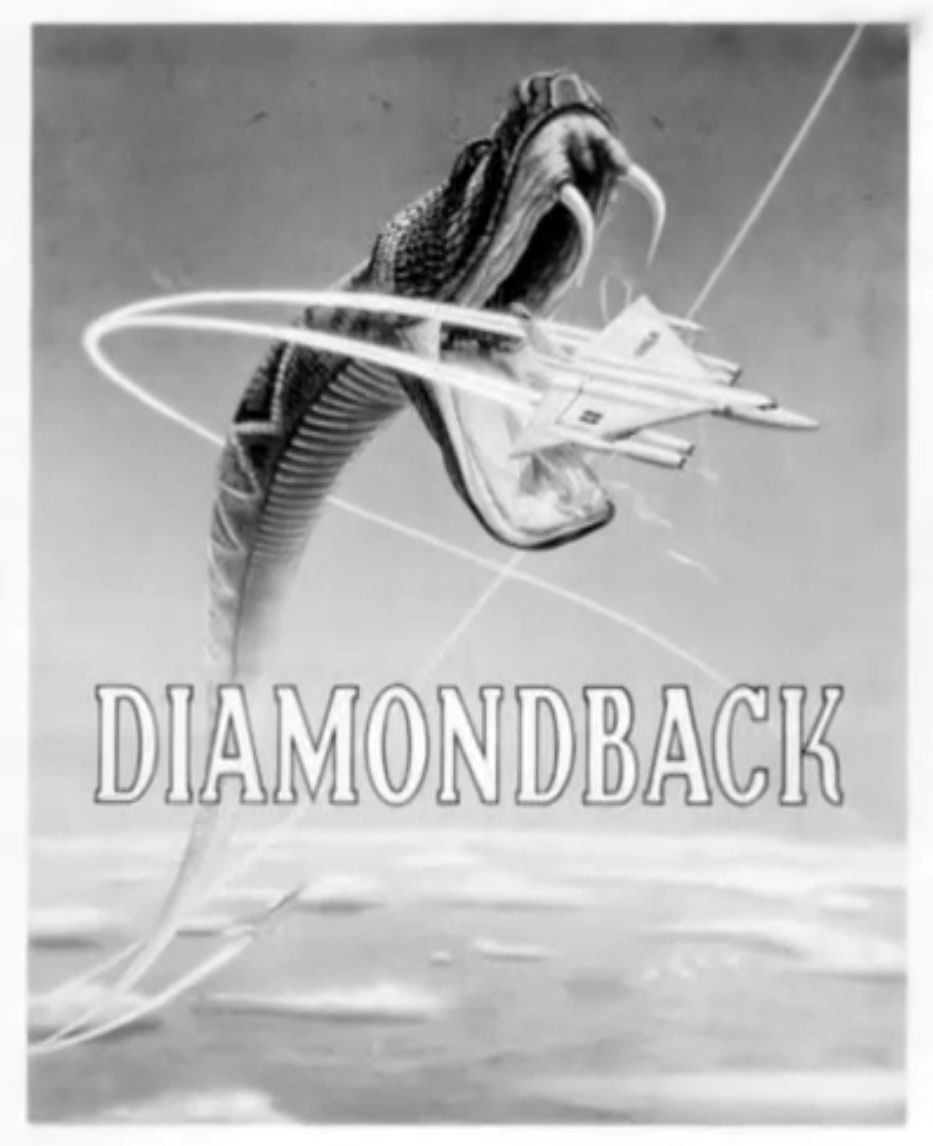
Coupled with its planned sparkling performance, the Diamondback was also to have much more stopping power than the Sidewinder. The early AAM-N-7 carried a conventional blast-fragmentation warhead weighing just 10 pounds. This was triggered by an infrared proximity or contact fuze and conferred an effective kill radius of around 30 feet.
Different warhead options were considered for the Diamondback. One of these was a more powerful, continuous-rod conventional warhead. A continuous-rod warhead is designed to produce an expanding zigzag ring of connected rods, to inflict a continuous ‘line’ of structural damage over the target surface.

More radical still was a low-yield nuclear warhead, developed by China Lake’s Special Weapons Division, which would have a yield of 0.75 kilotons.
At this point in the Cold War, nuclear warheads were seen as a viable solution for making a harder-hitting bomber-killer weapon. Such weapons were intended to take out larger or high-priority targets, namely entire formations of bombers. While the nuclear-armed AIR-2 Genie unguided air-to-air rocket is the best known of these, there was also the GAR-11, later redesignated the AIM-26A, or ‘Nuclear Falcon,’ which was the only guided nuclear-armed air-to-air missile ever deployed by the U.S. military. The GAR-11 carried a W54 warhead with a yield of 0.5 kilotons.
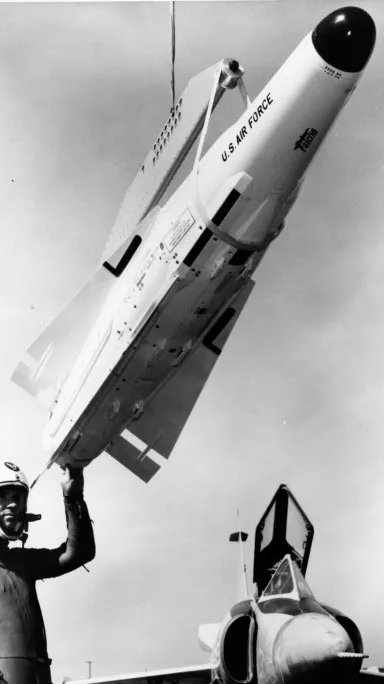
To pack in the new motor and more lethal warhead, the Diamondback would have been considerably bigger than the Sidewinder. The first-generation Sidewinder was 9.3 feet long and had a fin span of 22 inches; its body diameter remained at five inches. Meanwhile, the Diamondback would have been 12.3 feet long, with a wingspan of 40 inches; the body diameter was 12 inches.
Overall, the Diamondback would have tipped the scales at 850 pounds, compared with just 155 pounds for the early-model Sidewinder.
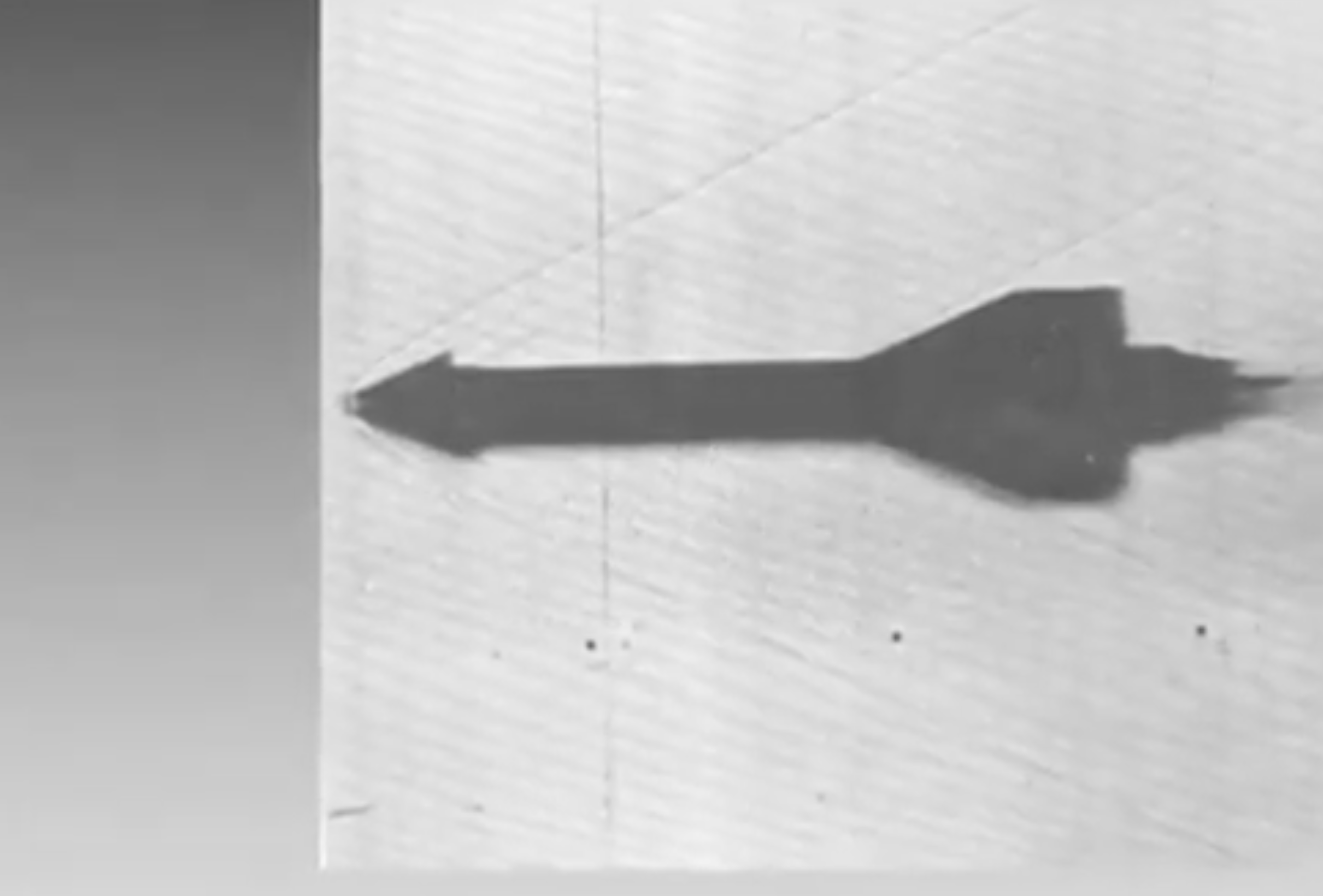
The Diamondback would have used what was, for its time, a highly unusual dual-mode guidance, with an infrared seeker combined with a passive-homing radar. Some air defense missiles today use dual-mode guidance, notably the Israeli Stunner, but it remains rare. Presumably, the Diamondback solution was chosen to make the missile more reliable: if the missile’s optical seeker lost the target lock, then the passive radar seeker should still remain locked onto the target, or vice-versa. Unlike the Stunner, however, there would have been no datalink to provide the missile with mid-course updates and it would have to rely on its dual-mode seeker throughout the engagement.
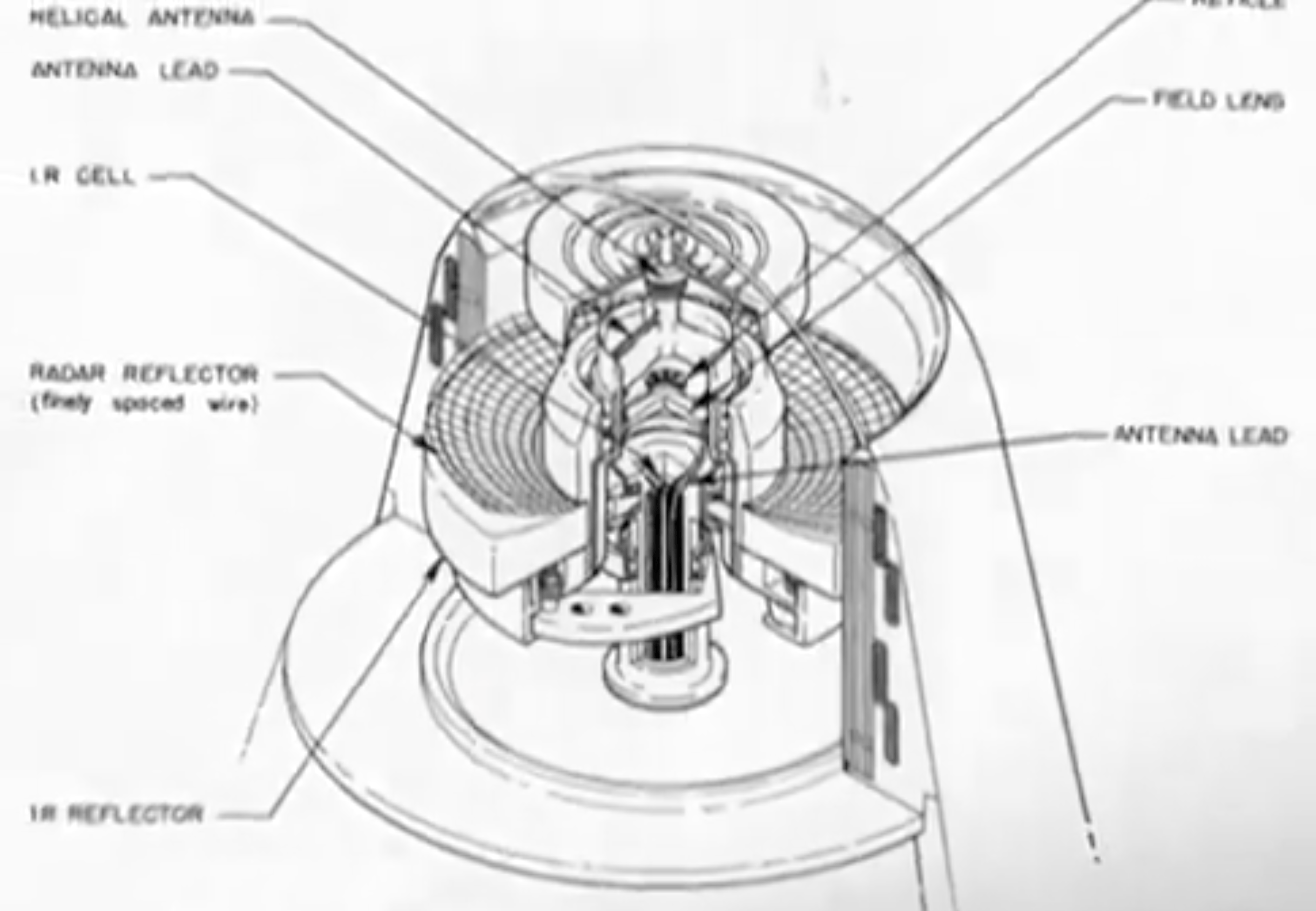
While the earlier Sidewinders were only able to attack targets from the rear sector, the Diamondback was also expected to be able to attack targets head-on. Specifically, a NOTS document refers to engaging Mach-2 bombers (at 70,000 feet) and fighters (at 40,000 feet) “in both front and rear-hemisphere approach, at firing ranges of 10-15 miles.” This was an advantage that would have been enabled by the radar seeker, while infrared seekers of the time were only effective in a tail-on attack.
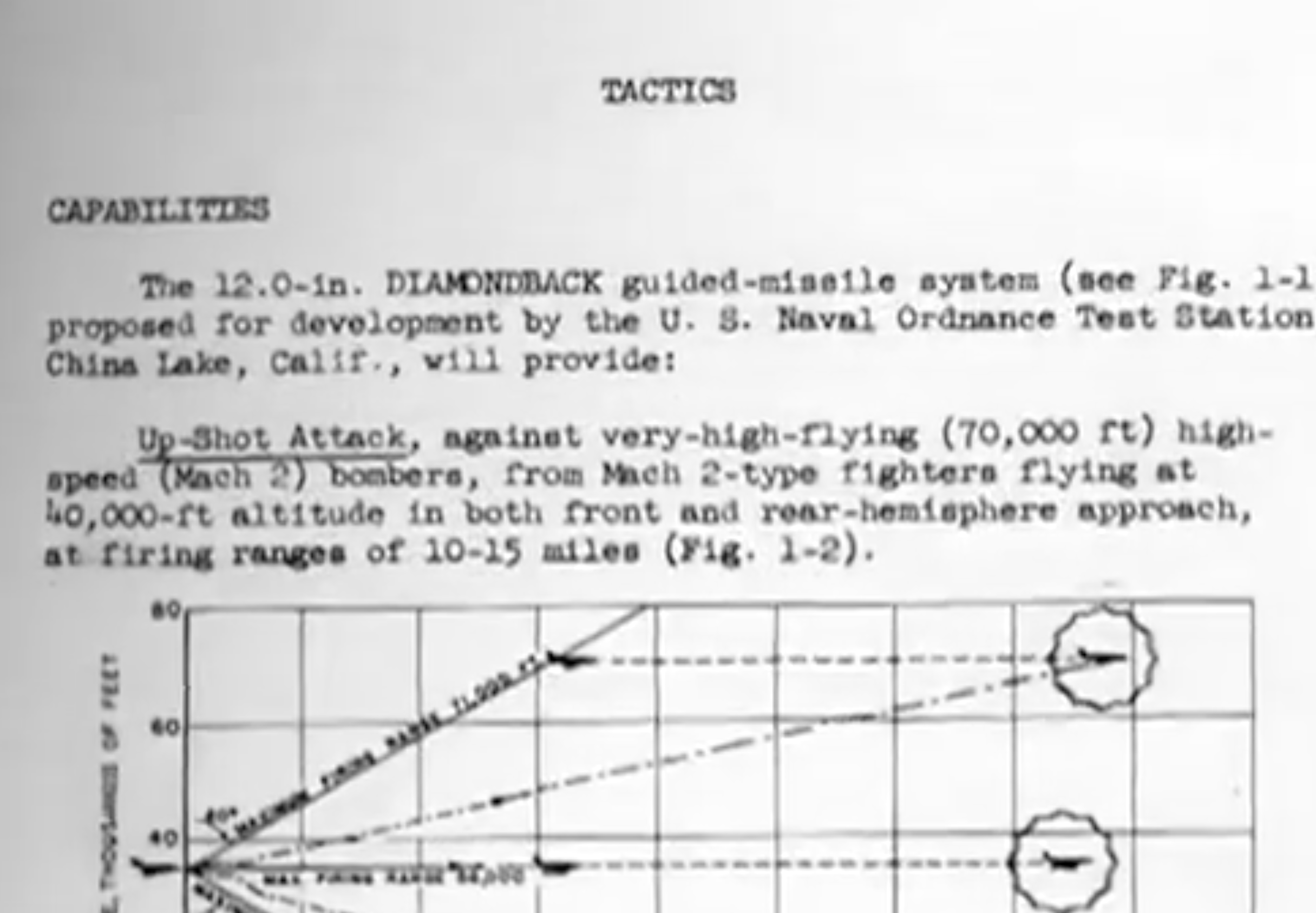
According to available accounts, the Diamondback studies at NOTS were generally successful. However, work on the project had come to an end by around 1958. Apparently, the Navy saw little operational use for such a missile. This may well have been driven by the fact that it was the U.S. Air Force that had primary responsibility for the homeland defense mission, for which a heavy ‘bomber-killer’ type of missile was much better suited.
It should be remembered that the Navy did briefly contribute to the North American Air Defense Command (NORAD) on a formal basis, but it only ever had a single squadron allocated to the task. This was All-Weather Fighter Squadron 3, or VF(AW)-3, that operated the F4D Skyray on behalf of the command in the late 1950s, and which was based at Naval Air Station North Island, California.

It’s unclear whether the Skyray was a candidate to carry the Diamondback, but it was envisaged for the F3H Demon and the F4H Phantom, two other carrier-based all-weather fighters.
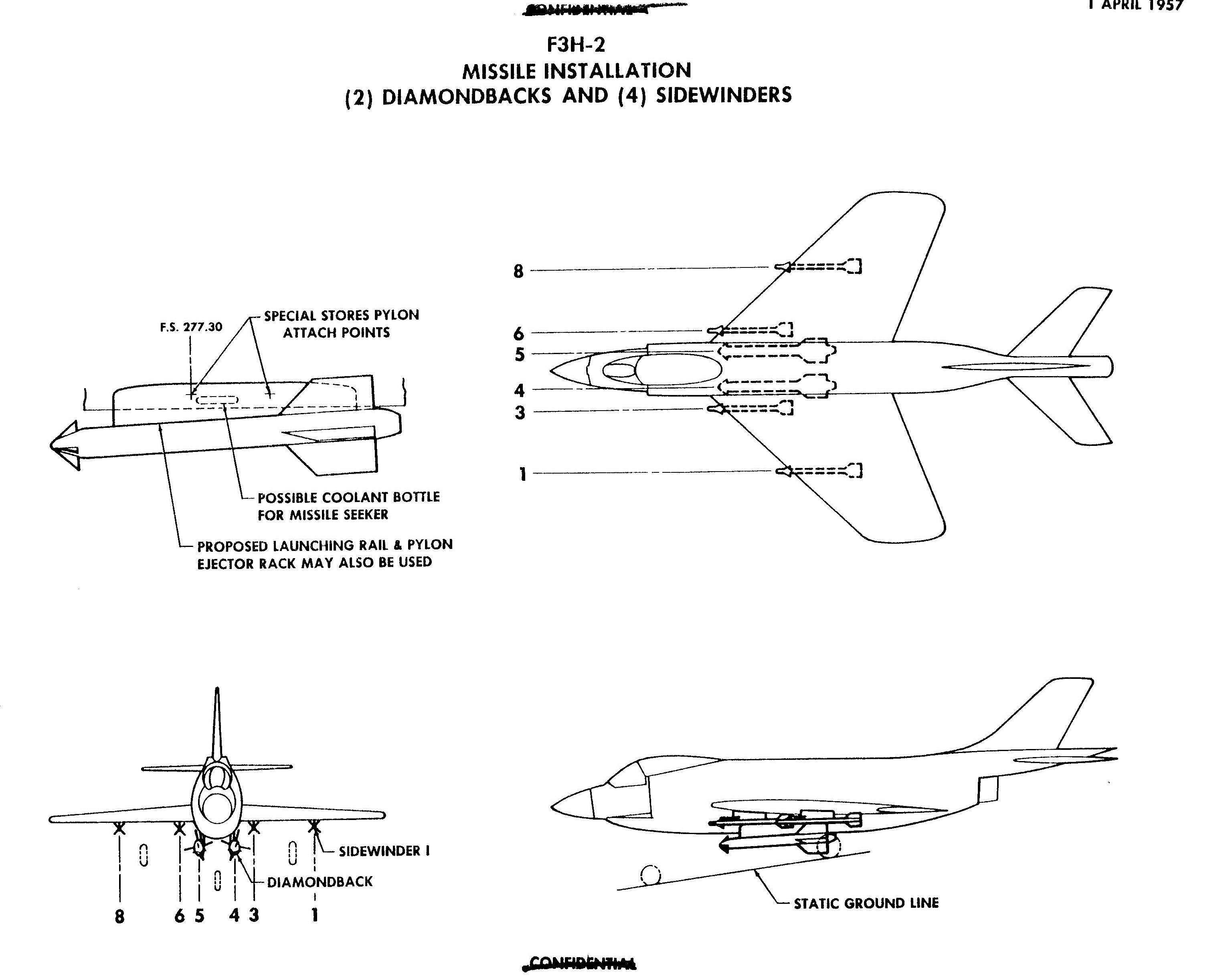
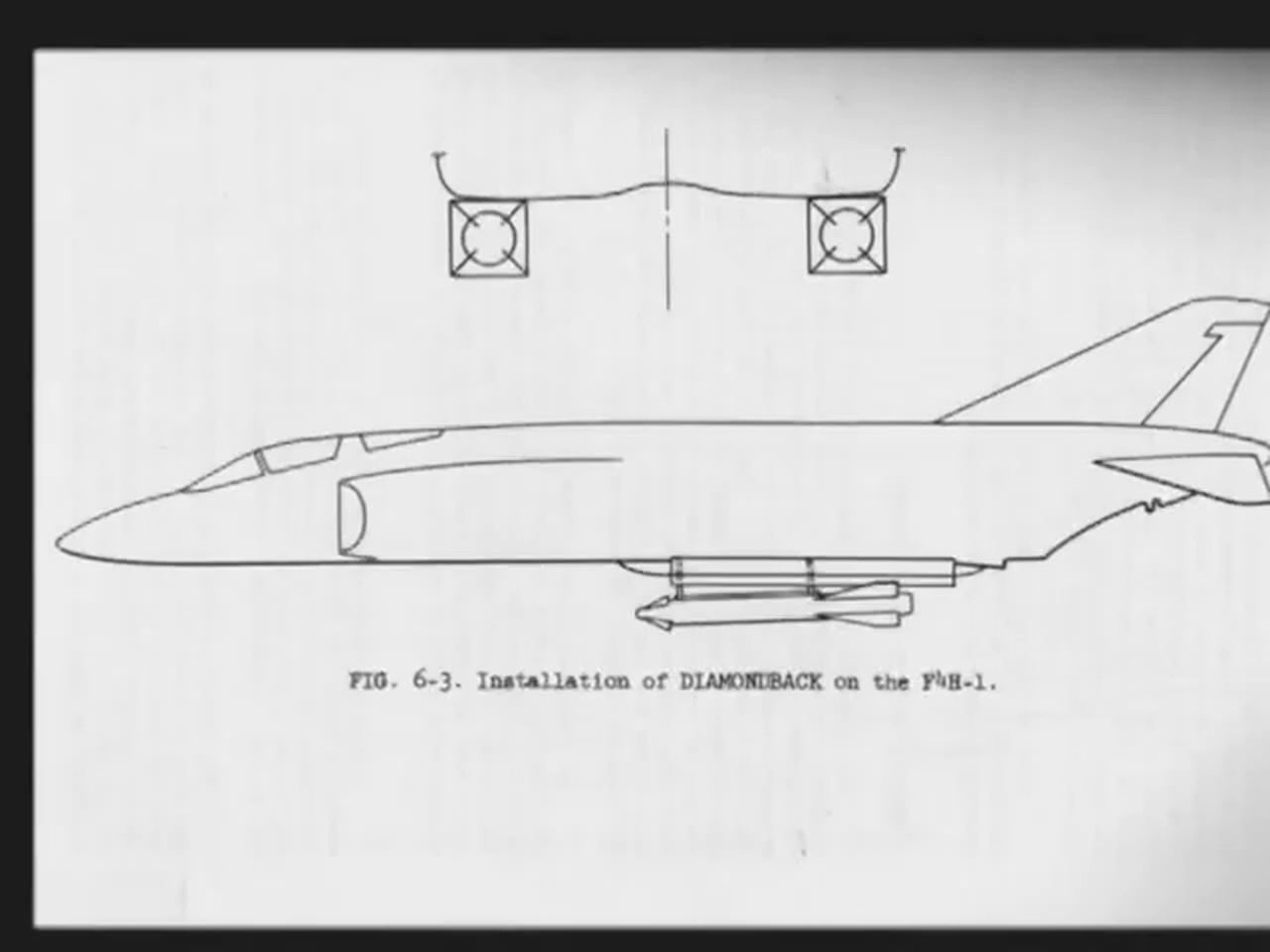
By the end of the 1950s, the Navy had introduced the Sparrow air-to-air missile, with semi-active radar homing (SARH) guidance. But this still fell some way short of the performance promised for the Diamondback. In its initial SARH form, the Sparrow had a maximum range of around six miles — in optimum conditions. The Navy Sparrow’s performance in the Vietnam War was also notably disappointing.
As for the Sidewinder, this went on to become the short-range weapon of choice for most Western air arms, and its combat record and continued development are well known. More recently, there have also been suggestions that the Sidewinder — namely the latest AIM-9X — could be evolved into a completely new and longer-range missile, for a modern equivalent of the Diamondback.
As it was, soon after the demise of the Diamondback, the Navy revisited the idea of a longer-range air-to-air missile.
With the new threat of Soviet bombers launching long-range cruise missiles, work began on the F6D Missileer that would be armed with AAM-N-10 Eagle long-range air-to-air missiles, the capabilities of which would be harnessed by the AWG-9 fire control system. Ultimately, the Missileer was canceled, but starting in 1960 the Navy began work on what would become the AIM-54 Phoenix (then known as the AAM-N-11). Together with the AWG-9, this would equip the F-14 Tomcat and become a cornerstone of fleet air defense for many years.
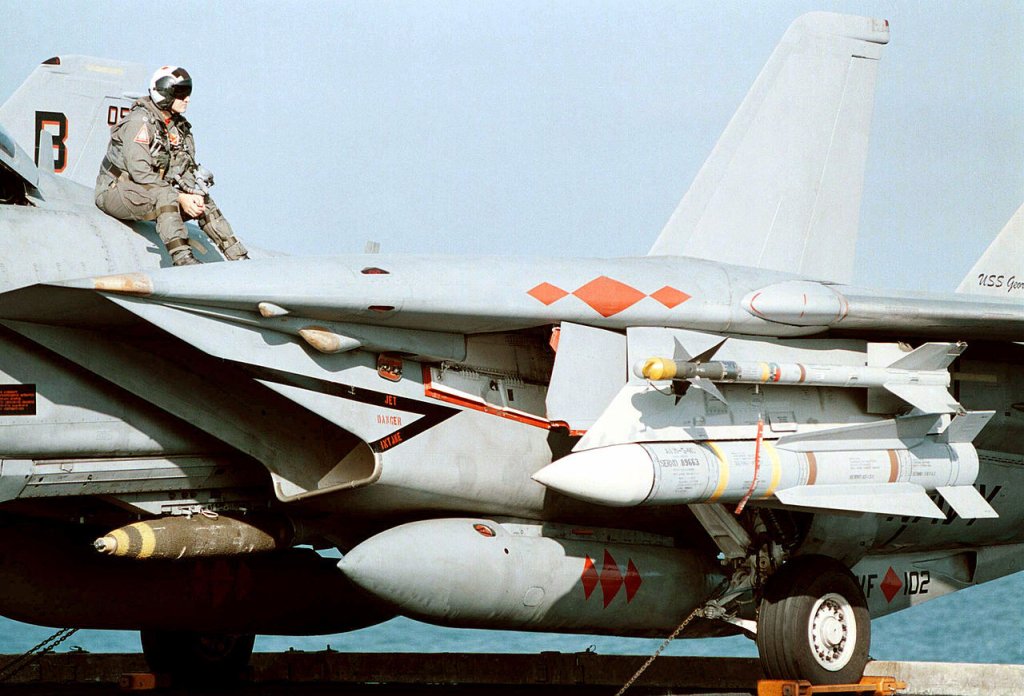
Now, the Navy is back in the long-range air-to-air missile game, with an air-launched variant of the multi-role, long-range surface-launched SM-6 missile, the AIM-174B, As you can read about here and watch our explainer video on it below, this weapon appears to have been developed very much with a future Pacific war in mind, in particular, to defend naval assets against long-range Chinese attacks and to pierce China’s anti-access bubble. The AIM-260, which will have greater range than the AIM-120 but less than the AIM-174B, all in a similar form factor as the AIM-120, is also deep in development.

While the intriguing Diamondback may have been ‘too much too soon’ for the Navy, which was only starting to introduce its first-generation air-to-air missiles, it remains a fascinating part of the lineage of longer-reaching aerial weapons for the service.
Contact the author: thomas@thewarzone.com
